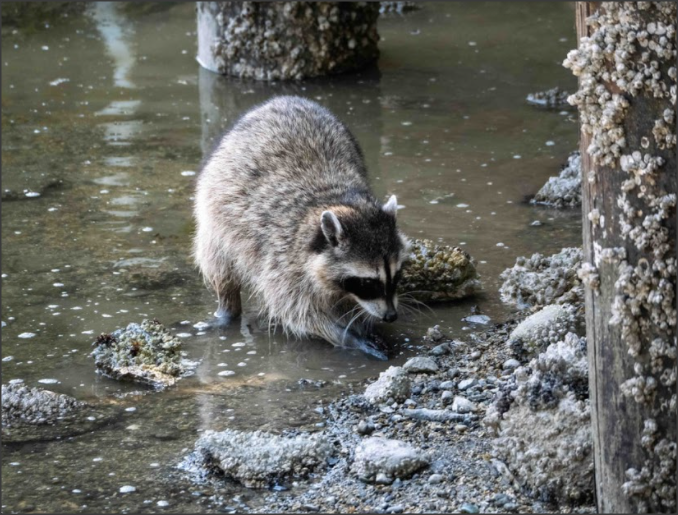Spring is a welcome time of year here. The days start getting longer, snowfall becomes more infrequent and the mercury begins to make its slow climb up the thermometer. It is the time when everything begins to thaw out and life starts moving again. Animals, including raccoons, that spend much of the cold months snug inside their dens or shelters become more active.
If you live around water or have a water feature in your yard, you have probably noticed that these areas are teeming with life in the spring. Water is a natural draw for wildlife at all times of the year, but spring can be an especially busy time. It is not uncommon to see raccoons around water, but is it normal to see them in the water? Our experts in professional raccoon control in Coquitlam answers this question.
Swimming for Gold
Raccoons are highly intelligent and industrious animals. They are successful in almost all types of environments. Their original habitat, however, is the forest and, preferably, near water. Not only do rivers, lakes, and streams provide a steady drinking source, they also supply easy pickings for this not-so-picky eater.
It is one thing to spy a raccoon on the banks of a river, but it is quite another to see one taking a plunge! Not to worry, though. They are very good at swimming. In fact, they are capable of staying in the water for quite a long time. In the spring, when waters are still frigid, their layers of fat and thick fur provide insulation. As the weather turns warmer, they make a jump in the water to cool off.
Diving for Dinner
Raccoons are omnivores, and they will eat just about anything they can get their paws on. Aquatic habitats provide them an ample source of food, from insects to fish. If you see one taking a dive, it isn’t likely that they need rescuing. These little critters are better able to swim underwater than we are.
When fish is on the menu, raccoons have no problem diving for their dinner. They can submerge themselves to depths of up to 1.5 meters to catch their prey. Don’t be alarmed if you don’t see them reemerge right away, either. They can hold their breath for several minutes, which is much more than we humans can do!
Sensing a Change
There’s another reason why you are likely to see raccoons around water. Though lore has it that they wash their food before eating it, which has endeared them to many, this is not actually the case. Yes, they can be seen dunking their food in water and rolling it around before eating it, but the reason is different than what is commonly believed.
The masked bandit relies on its dexterous hands for more than just breaking and entering your garbage bin or attic! The pads on raccoon fingers are highly sensitive, and water heightens that sensitivity. Since they don’t see very well, they gather information about their food from their sense of touch. Dunking it in water provides them with more data on what they are ingesting.
Invading Your Pool
It isn’t just wild bodies of water that draw the raccoon in; your pool can too. Many homeowners have reported seeing one doing laps in their swimming pool or taking a dive in the fishpond. It can be an entertaining sight, especially when you know they can swim! Just be aware that raccoon urine and feces can spread disease, so if one of these cute little critters takes over your swimming pool, it is a good idea to seek the assistance of experts in raccoon control in Coquitlam.
Getting Help With Raccoon Removal
Skedaddle Humane Wildlife Control is here to help you reclaim your pool or any other area where raccoons have moved in. We are experts in humane removal and exclusion techniques, so give us a call when you have a raccoon problem.



